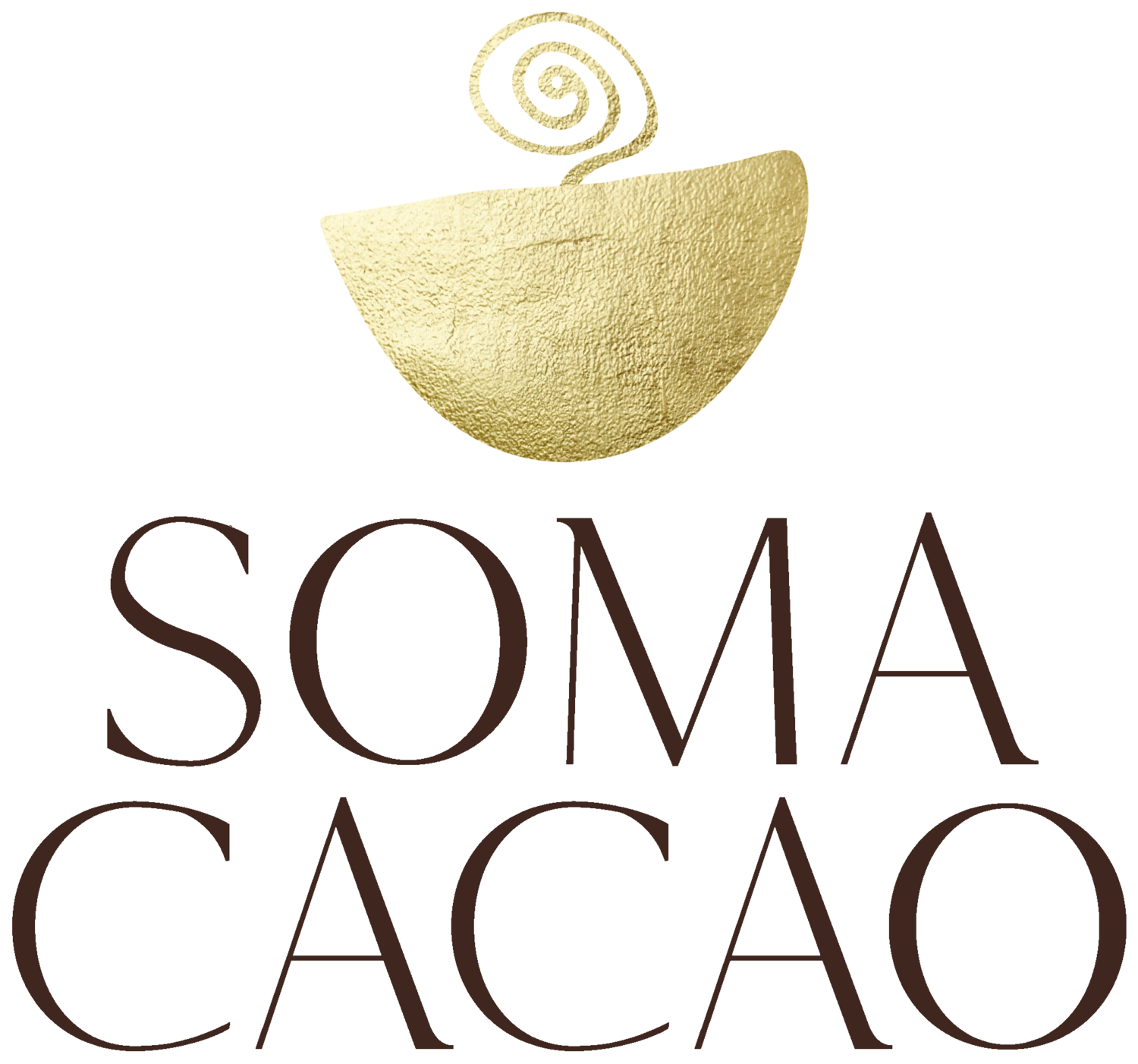What’s the difference between Soma Cacao & cacao powder?
𝗪𝗵𝗮𝘁’𝘀 𝘁𝗵𝗲 𝗱𝗶𝗳𝗳𝗲𝗿𝗲𝗻𝗰𝗲 𝗯𝗲𝘁𝘄𝗲𝗲𝗻 Soma Cacao 𝗮𝗻𝗱 𝗰𝗮𝗰𝗮𝗼 𝗽𝗼𝘄𝗱𝗲𝗿? We’ve answered this question many times before, but we will continue to address it as best we can. The so-called “ceremonial cacao” movement is fairly new down-under, so the confusion is understandable.
Comparing Soma Cacao to cacao powder is not just about the difference in quality. We are speaking about substances with 𝘦𝘯𝘵𝘪𝘳𝘦𝘭𝘺 𝘥𝘪𝘧𝘧𝘦𝘳𝘦𝘯𝘵 𝘤𝘩𝘦𝘮𝘪𝘤𝘢𝘭 𝘤𝘰𝘮𝘱𝘰𝘴𝘪𝘵𝘪𝘰𝘯𝘴. It’s like comparing a whole fresh orange 🍊 to reconstituted orange juice.
There are also significant differences related to ethical sourcing practices of Soma Cacao versus most of the “cacao” or “cocoa” (“ceremonial” or not) you can find in supermarkets, online and in health-food stores throughout the country.
We’ve tried to break all of this down in some detail below. And we’re always here if you would like any further clarifications 🧡
SOMA CACAO IS TECHNICALLY A SOLIDIFIED “PASTE”
In the world of chocolate-making, cacao "paste" is sometimes called "liquor", or "cocoa mass". Here's the process:
FROM CACAO BEAN TO PASTE
Harvesting & fermentation: When ripe, cacao pods (fruits of the cacao tree) are harvested, cracked open, and the beans are removed and set outside to naturally ferment for 5-7 days. During fermentation the flavour profile of the beans develop, as does the nutritional profile. Most bulk cacao producers skip this step, but all Soma Cacao has been fermented to perfection.
Drying: The beans are then dried to remove their moisture content.
Roasting: The beans are generally roasted to further enhance the flavour.
Winnowing: The beans are peeled, removing the outer shell.
Grinding: Once roasted and peeled, the beans are ground up into a paste, and voila!
2. CACAO POWDER HAS BEEN HEAVILY PROCESSED - STRIPPING OUT THE HIGHLY PRIZED CACAO BUTTER.
Soma Cacao contains the entire cacao bean, and is thus a whole food, whereas cacao powder or cocoa powder have been stripped of the highly prized cacao butter.
FROM CACAO PASTE TO POWDER:
Pressing: The cacao paste is pumped into giant hydraulic presses, where most of the cacao butter is removed. This highly prized butter is usually sold to cosmetic and pharmaceutical companies.
Dutching: The cacao is often then "dutched" or alkalised, neutralising the acidity, changing the pH levels and reducing bitterness. Baking soda is added to the remaining material, which is called "press cake."
Pulverising: This treated press cake is then cooled, pulverised and sifted into a powder, which is then packaged for sale as a hot-chocolate mix, a health food, or for use in baking.
3. SOMA CACAO & CACAO POWDER THEREFORE HAVE VERY DIFFERENT NUTRITIONAL PROFILES
Given the intensity of the industrial scale processing used, cacao powder and cocoa powder do not contain the same nutritional benefits as pure cacao paste. The processes used gradually remove some of the naturally occurring minerals, antioxidants and flavanols from the cacao beans.
Without cacao butter as the carrier fat, our ability to absorb any remaining vitamins, antioxidants, and nutrients is significantly reduced, as is our ability to experience the effects of theobromine: cacao's unique active stimulant, and other compounds that interact with our neurotransmitters.
Further, cacao powder, when consumed without the butter, can be taxing on the adrenals, liver and digestive tract, and overstimulating for our nervous system.
4. ALL OF OUR SOMA CACAO VARIETIES ARE SINGLE ORIGIN, AND ETHICALLY SOURCED.
Cacao plantations in Ghana and the Ivory Coast provide 80% of the world’s cocoa/cacao related products, and unfortunately hundreds of thousands of slaves, including children, continue to work on these plantations. There is also significant corruption amongst cacao cooperatives around the world, including those in South America.
At Soma Cacao we have a personal relationship with our suppliers. We do not use a third party agent, a middle-man or supply chain - we’re directly supporting family-owned small-businesses whose livelihood depends on cacao. We pay stable, premium prices that are substantially higher than commodity market and Fair Trade prices, and are protected from market fluctuations.
Most cacao, including so-called "ceremonial cacao" available in Australia is imported as a processed product from overseas manufacturers, who collect beans from a large number (tens of thousands!!) of cacao farms. It is then passed through a network of traders and importers before arriving in Oz.
By contrast for us, at Soma, it is important to be able to trace our cacao all the way back to the farm, and to know exactly where our funds are going.
*A NOTE ON “CACAO” VERSUS “COCOA”
This question becomes all the more complex because of the use of the words “cocoa” and “cacao” throughout both the chocolate and the health-food industry. There is no consistency, with the terms often used interchangeably. The word “cacao” is often used to make the substance sound more healthy and/or ethical, yet when you drill down the source of the product and the processes undertaken you discover the only real difference is spelling.


